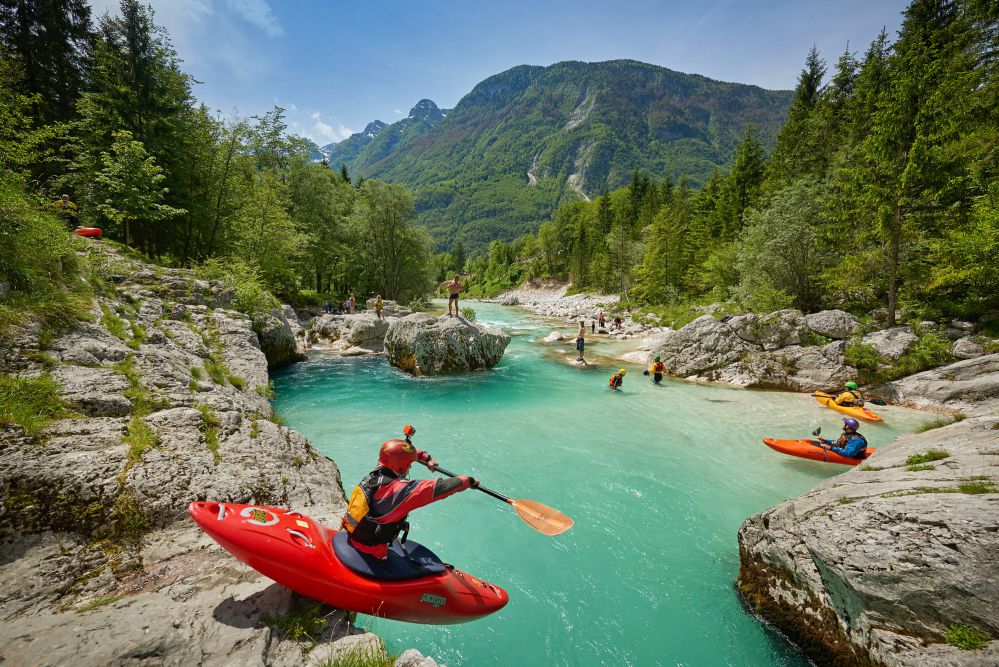The conference will be held in the Grand Hotel Union in Ljubljana, Slovenia between 25-28 September 2023.
Ljubljana – The Beloved City
The Slovenian capital Ljubljana, a city whose name means ‘The beloved’, is a great place to visit and the political and cultural heart of the Slovenian nation. It has a rich history, tradition, style, arts & culture, and an atmosphere that is both Central European and Mediterranean. Being close to many of the major sights and attractions of Slovenia, Ljubljana can also be your starting point to discover the country’s diversity.


Legend about the Origin of Ljubljana
Legend has it that Ljubljana was founded by the Greek mythological hero Jason and his companions, the Argonauts, who had stolen the golden fleece from King Aetes and fled from him across the Black Sea and up the Danube, Sava and Ljubljanica rivers.
At a large lake in the marshes near the source of the Ljubljanica they stopped and disassembled their ship to be able to carry it to the Adriatic Sea, put it together again, and return to Greece. The lake was the dwelling place of a monster, which Jason fought, defeated and killed. The monster, now referred to as the Ljubljana Dragon, found its place atop the castle tower depicted on the Ljubljana coat of arms.

Ljubljana’s Sights and Attractions
Ljubljana is a picturesque city full of romantic views, with a medieval hill top castle towering over its historical city centre and a calm river spanned by a series of beautiful bridges running right through it. It’s a city with a medieval heart, a city of the Baroque and Art Nouveau, with an old castle resting above it like a sleeping beauty.
In Ljubljana eastern and western cultures met; and the Italian concept of art combined with the sculptural aesthetics of Central European cathedrals. The city owes its present appearance partly to Italian baroque and partly to Art Nouveau, which is the style of the numerous buildings erected immediately after the earthquake of 1895. The city owes a great deal of its architectural appeal to the famous Ljubljana-born architect Jože Plečnik (1872–1957), whose soul and vision are imprinted on Ljubljana just like Gaudí’s are on Barcelona.
The central point of interest in Ljubljana is Ljubljana Castle, watching over the city from the centrally located castle hill. The beginnings of the medieval castle go back to the 9th century, although the castle building is first mentioned only in 1144. It gained its present image after the earthquake of 1511 and following further renovations at the beginning of the 17th century. The provincial rulers occupied it until the first decades of the 17th century, while later it became a garrison and the provincial prison. The castle’s gradual renovation, ongoing since the mid 1980’s, is approaching its completion. A funicular connects the Old Town to the castle hill, adding an even more convenient access alternative to the tourist train.




A Perfect Base for exploring Slovenia
Ljubljana lies at the centre of Slovenia. In the morning you can visit the stunningly beautiful Lake Bled, Lake Bohinj or Soča Valley in the high mountainous region of the Alps, and in the evening enjoy the sunset in one of the charming little towns on the Adriatic coast. The world famous Postojna Caves are only about 50 kilometers from Ljubljana. It only takes minutes to reach the peaceful and unspoiled countryside of the city’s green surrounding areas, which offer endless opportunities for hiking, cycling, fishing and horse riding.
In Ljubljana you can choose from a vast range of attractively priced day-trips offering the opportunity to visit the country’s major attractions or explore the distinctive features of its amazingly diverse regions.
Take a look at the information made available by VISITLJUBLJANA for trip and excursion ideas HERE.




Location
The city of Ljubljana is strategically situated almost in the geographic centre of Slovenia between the banks of the rivers Sava and Ljubljanica. Thanks to its central location the city itself creates an important international transport node which is easily within reach from all over Europe.
It lies 390 kms (243 mi) from Austrian capital Vienna, 457 kms (284 mi) from Slovakian capital Bratislava, 470 kms (292 mi) from Hungarian capital Budapest and just 143 kms (89 mi) from Croatian capital Zagreb. It takes only 410 kms (255 mi) to get to Munich, Germany, or 240 kms (150 mi) to Venice, Italy.
Additional Reading
- 10 LJUBLJANA’S TOP ATTRACTIONS: https://www.visitljubljana.com/en/visitors/explore/things-to-do/sightseeing/article/10-ljubljanas-top-attractions/
- 12 Top Tourist Attractions in Ljubljana: https://www.touropia.com/tourist-attractions-in-ljubljana-slovenia/
- Things to Do in Ljubljana: https://www.tripadvisor.com/Attractions-g274873-Activities-Ljubljana_Upper_Carniola_Region.html
- 25 Best Things to Do in Ljubljana: https://www.thecrazytourist.com/25-best-things-ljubljana-slovenia/
- Open Kitchen – a weekly food festival close to the IJCB 2023 venue: https://www.odprtakuhna.si/en/
- Shopping opportunities (one of the biggest shoping areas in Europe): https://www.btc-city.com/en/ljubljana